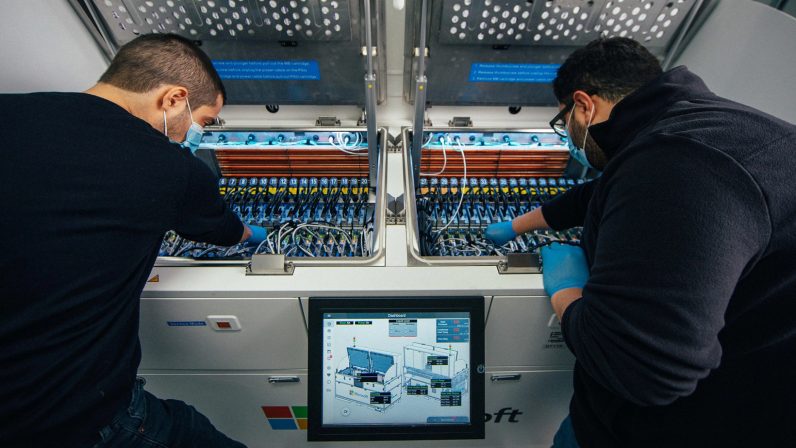How is the company doing this? The tech giant said it’s using a special liquid that boils at 50 degrees Celsius (122 degrees Fahrenheit) as compared to 100 degrees Celcius (212 degreesFahrenheit) boiling point of water. This means the heat generated by servers is carried away quickly by the vapor and in turn, reduces the risk of overheating. Engineers have built a condenser in the tank lid, so vapor converts into liquid as soon as it touches the lid and falls back into the tank for reuse. Microsoft said that it was inspired to try out this tech by observing cryptocurrency miners using liquid immersion to get more out of their mining rigs. When the Redmond-based firm tried this out, the power consumption of servers running resource-intensive tasks such as AI reduced by 5% to 15%. This is a more efficient way than evoparating air cooling, which consumes a lot of water. What’s more, the liquid immersion allows the firm to pack in more chips in a dense space and run them at higher power. The tech giant is not alien to running data servers under the liquid. In 2018, it submerged 864 servers with 27.6 petabytes of storage underwater near the Scottish shore. The servers operated in a submarine-like tube without any onsite maintenance. Mircosoft said it was able to reduce the failure rate to one-eighth as compared to data centers on the land. After experimenting with running a single server rack in a liquid immersion, the company wants to try operating multiple racks. It said that such systems could allow the firm to rethink server designs for low-latency and high-performance output that requires minimal maintenance. In the future, Microsoft potentially wants to deploy these tanks in the middle of the city, under a 5G tower, to power multiple applications such as communications and self-driving cars.
